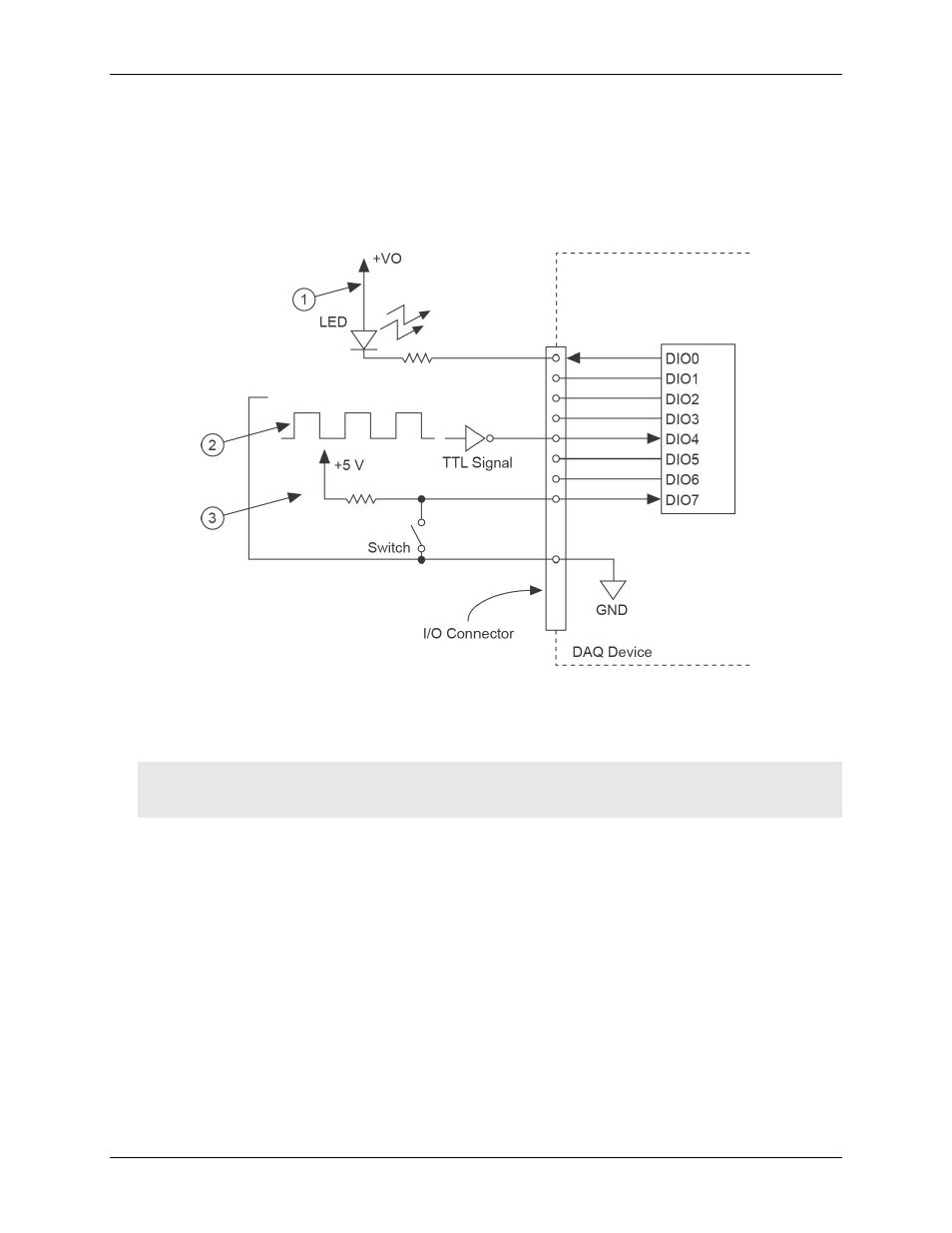Digital i/o, Power-on states, Dio protection – Measurement Computing USB-231 User Manual
Page 18

USB-231 User's Guide
Functional Details
18
Digital I/O
You can connect up to eight digital I/O lines to
DIO0
through
DIO7
.
GND
is the ground-reference signal for
digital I/O. Each digital I/O line is bit-configurable as input or output. Digital input voltage ranges from 0 V to
5 V are permitted, with thresholds of 0.8 V (low) and 2.3 V (high). Each DIO channel can sink up to 4 mA for
direct drive applications when used as an output. All digital I/O updates and samples are software-paced.
Figure 10 below shows
DIO0
through
DIO7
connected to signals configured as digital inputs and digital outputs.
1
DIO0 configured as an open drain digital output driving a LED
2
DIO4 configured as a digital input receiving a TTL signal from a gated inverter
3
DIO7 configured as an digital input receiving a 0 V or 5 V signal from a switch
Figure 10. Example of connecting a load
Caution! Exceeding the maximum input voltage ratings or maximum output ratings – listed in the
Specification chapter – can damage the device and the computer. Measurement Computing is not liable for
any damage resulting from such signal connections.
Power-on states
At system startup and reset, the USB-231 sets all DIO lines to high-impedance inputs. The device does not drive
the signal high or low. Each line has a weak pull-down resistor connected to it.
DIO protection
To protect the DAQ device against overvoltage, undervoltage, and overcurrent conditions, as well as ESD
events, avoid these fault conditions by using the following guidelines:
If you configure a DIO line as an output, do not connect it to any external signal source, ground signal, or
power supply.
If you configure a DIO line as an output, understand the current requirements of the load connected to these
signals. Do not exceed the specified current output limits of the DAQ device. Measurement Computing has
several signal conditioning solutions for digital applications requiring high-current drive.
If you configure a DIO line as an input, do not drive the line with voltages outside of its normal operating
range. The DIO lines have a smaller operating range than the AI signals.
Treat the DAQ device as you would treat any static-sensitive device. Always properly ground yourself and
the equipment when handling the DAQ device or connecting to it.
